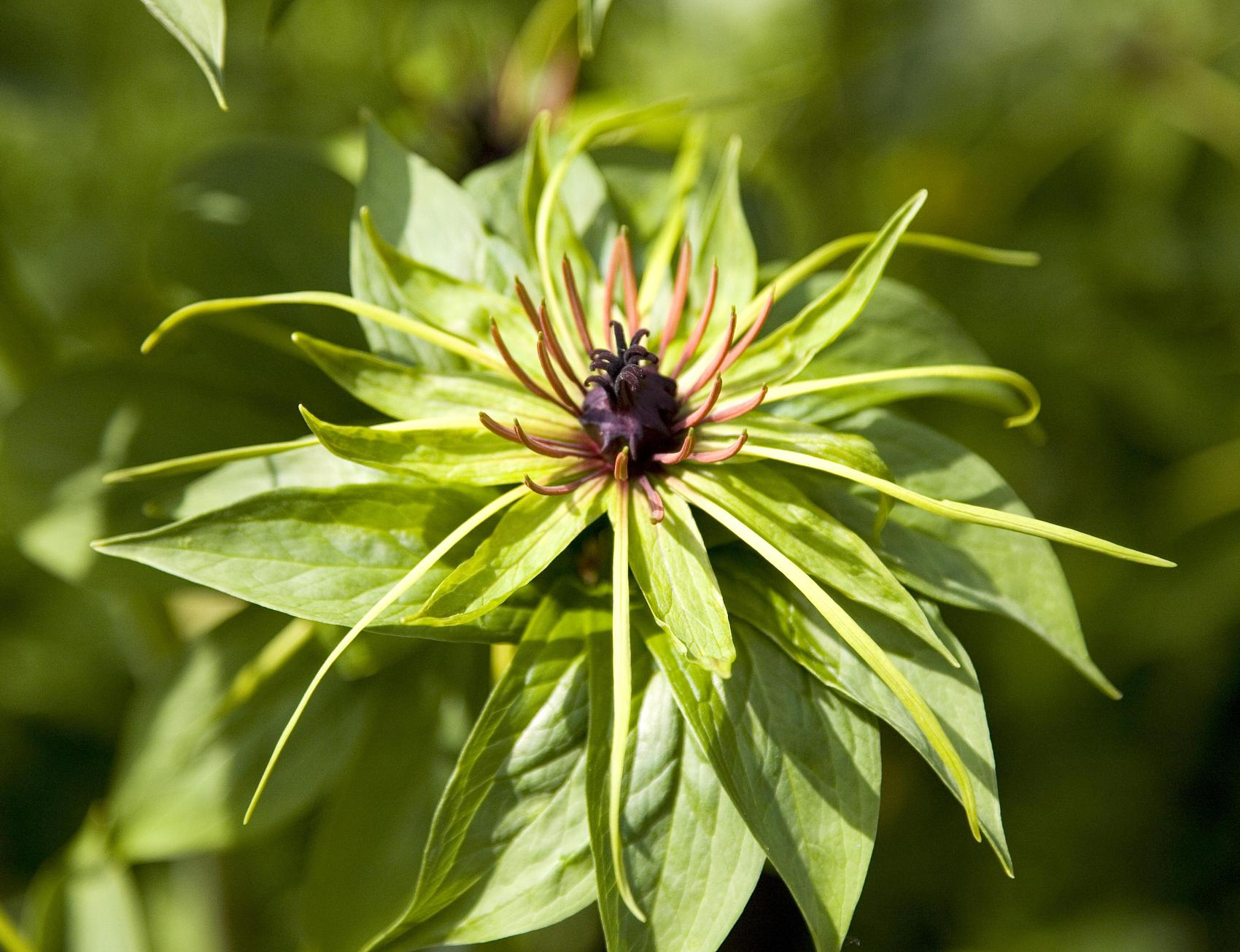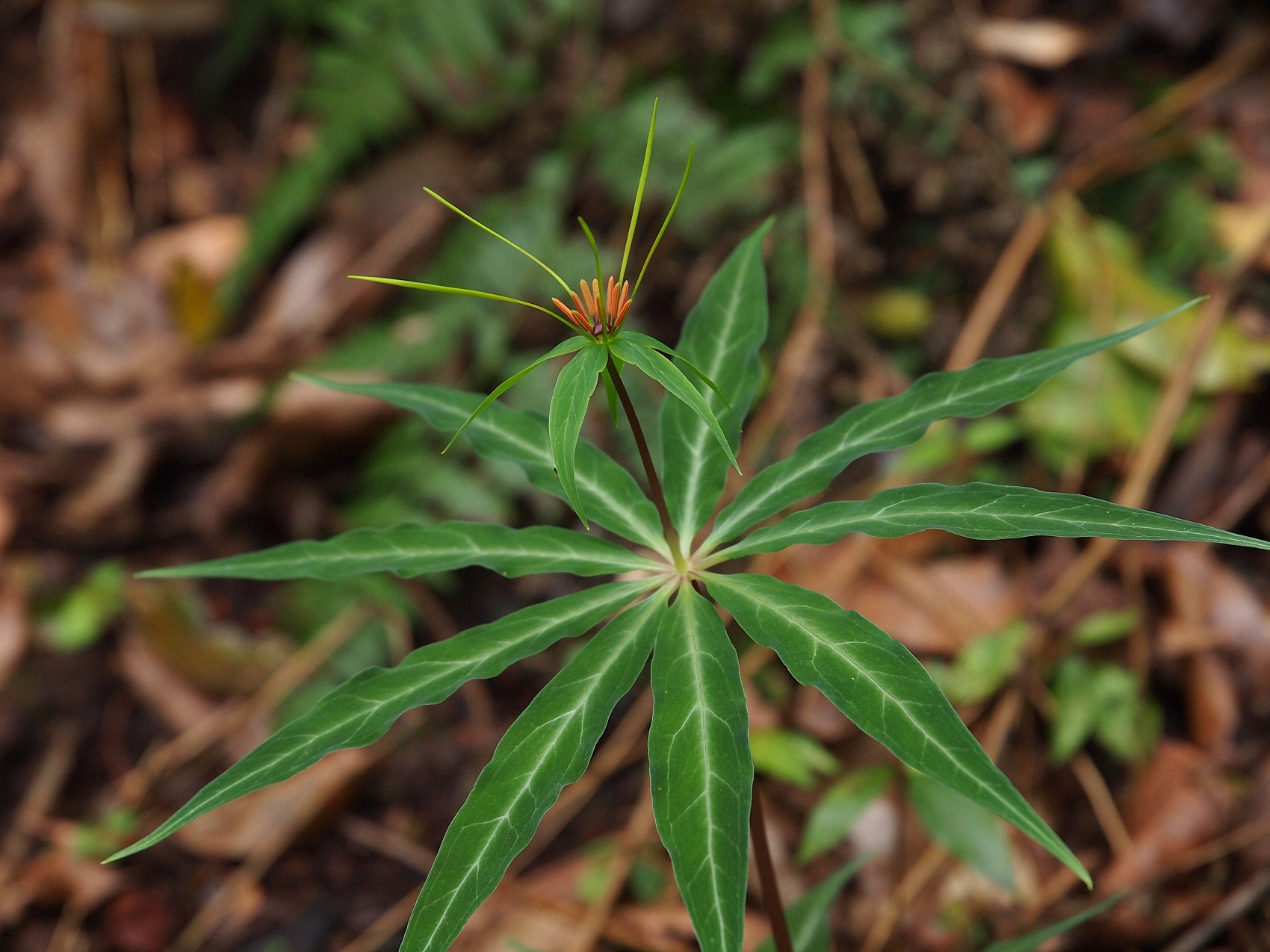
In the forest of Mount Fanjing in southwest China's Guizhou Province, you might discover a fascinating plant with two or more layers of leaves. Locals affectionately call it "chonglou," likening it to a multiple-story cottage.

Paris polyphylla. /VCG Photo
Scientifically known as Paris polyphylla, the plant is native to China. In Chinese, it has a clear and descriptive name, "qiyeyizhihua," which means "seven leaves, one flower."
As described, the plant usually has seven leaves in a single whorl. A second whorl with four or five leaves sits above it and a spider-like flower grows out of its center, sending out long, thread-like, yellowish-green petals.
In the middle lays a purple or orange capsule that contains seeds, waiting for animals to take and spread. The seeds can't germinate in laboratory conditions. Thus, Paris polyphylla is listed as vulnerable by the International Union for Conservation of Nature (IUCN) and in need of protection.

Paris polyphylla. /VCG Photo
There's a moving local tale behind the plant that tells of its medicinal properties. According to the legend, seven brothers fought with a huge boa bravely but were eaten by it. Their little sister decided to get revenge and made a cloth with plenty of embroidery needles. When the boa swallowed her, the needles pierced its body and killed the snake. Afterward, Paris polyphylla is said to grow where the boa lost its life. Locals use it to treat poisonous insect bites.
Paris polyphylla normally grows on grassy and rocky slopes or near the banks of streams at altitudes of up to 3,300 meters high. They love the moist and humus-rich soil under the dense canopy of forests. The plant is mainly found in Guizhou, Yunnan and Sichuan provinces, and the Tibet Autonomous Region.

Paris polyphylla. /VCG Photo
China's Flora Tour
From the wetlands along the east coast to the dense rainforests hidden in the west, China boasts an array of plant species. In this series, CGTN goes on a tour to learn about some of the most representative flora in different provinces and see how they live in harmony with local geography and climate.
Read More:
China's Flora Tour: Henan-'King of Flowers' stuns with exquisite beauty
China's Flora Tour: Jilin-The pale flower that gleams in dark
China's Flora Tour: Guizhou-Elegant orchids bloom in the deep valley
China's Flora Tour: Guangdong-A 'must have' on Cantonese dining tables
China's Flora Tour: Guizhou-The harbinger of spring on Mount Fanjing
China's Flora Tour: Jilin-Lady's slipper orchids
China's Flora Tour: Guizhou-A tree's growing strategy
China's Flora Tour: Guangdong-A delicacy in the ancient Chinese imperial court
(Cover image provided by CGTN Nature film crew, designed by CGTN's Jia Jieqiong.)
(If you want to contribute and have specific expertise, please contact us at nature@cgtn.com)

Copyright © 2018 CGTN. Beijing ICP prepared NO.16065310-3
Copyright © 2018 CGTN. Beijing ICP prepared NO.16065310-3